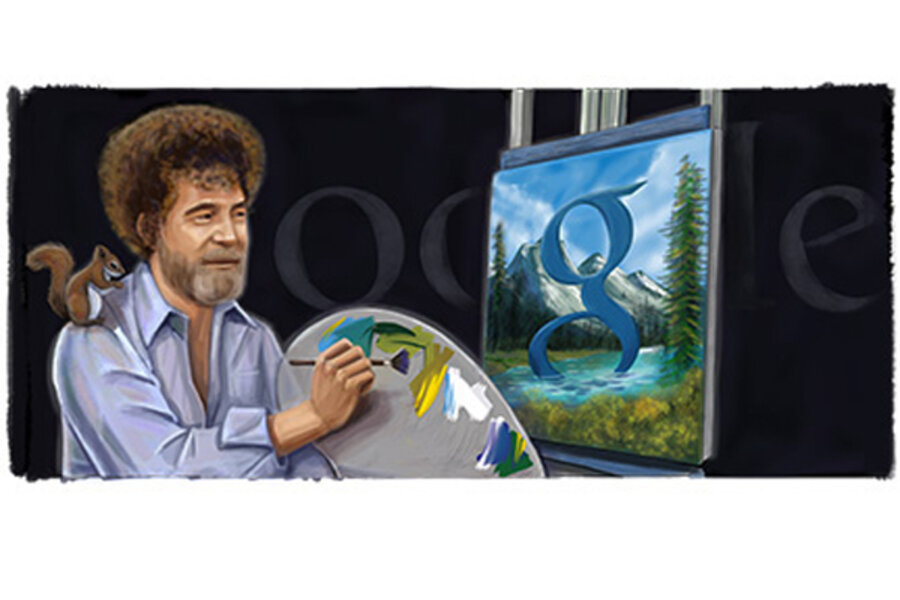Remembering Bob Ross, the host of 'The Joy of Painting'
Loading...
The Google homepage today depicts a big-haired painter with a squirrel on his shoulder, a brush in his hand, and a look of bemused happiness on his face. The painter, of course, is Bob Ross, the resolutely earnest public television personality, who would have celebrated his 70th birthday today. From 1983 until 1994 – a total of 403 episodes in all – Ross hosted "The Joy of Painting," an unabashedly low-budget how-to guide.
Ross's official Facebook page calls "The Joy of Painting" "the most popular art show" on TV. And maybe it was (no statistics are provided). But for many of us, it was simply the mellifluous soundtrack – as the Monitor's Molly Driscoll notes, Ross's voice had an infamously soporific effect – to a 1980s childhood. To others, it was the program starring the dude who kindly fed a baby squirrel with the world's smallest milk bottle.
As Steven Zeitchik of the Los Angeles Times notes today, Ross was more than a painter. He was icon, an innovator, a figure of genuine cult celebrity.
"You'd watch Ross quietly at home, half-admiringly and half-ironically, thinking you were one of the few," Zeitchik writes. "Meanwhile, millions of people around the country were doing the same. Long before there was viral video, Ross was going viral."
Robert Ross was born in Daytona Beach, Florida, in 1942, and raised in Orlando.
He attended Orlando High School, and at the age of 19, he signed on with the Air Force. He was immediately dispatched to Alaska. "I was the guy who makes you scrub the latrine, the guy who makes you make your bed, the guy who screams at you for being late to work," he later said of his time in the Air Force. "The job requires you to be a mean, tough person. And I was fed up with it."
He left the Air Force in 1981, with a rank of master sergent, and studied for a time under William Alexander, the host of a television show called "The Magic World of Oil Painting." At first, he taught art for a while for an art-supply company. Then Ross got the idea to submit his own audition video to public television stations. An outlet in Virginia agreed to give him a pilot, and the rest is history.
Ross, the New York Times wrote in an obituary, was an encouraging presence, who was convinced he could teach just about anyone to paint in half an hour. His "folksy demeanor eventually came to be interpreted as a kind of reverse chic," the Times noted.
Ross hosted "The Joy of Painting" for more than a decade – more or less to the end of his life. He died in 1995.
Ross's legacy has endured. According to his official Facebook page, The Joy of Painting is carried by approximately 95 percent of all public television stations in the US, "accessing more than 93.5 million households." Foreign broadcasts reach a range of markets, including the UK, the Netherlands, Mexico, Switzerland, The Philippines, South Korea, and Hong Kong.
Meanwhile, dozens of Bob Ross instructional videos and books remain in print; a reported 3,000 teachers have been certified in the official "Bob Ross" style.
But you don't have to sign up for a class or purchase a book to learn from the master. Instead, you can navigate over to the Bob Ross topic page on YouTube, where dozens of clips of Ross – and his disciples and fans – are stored.
Bob Ross aficionado? Drop us a line in the comments section. And for more tech news, follow us on Twitter @venturenaut.







